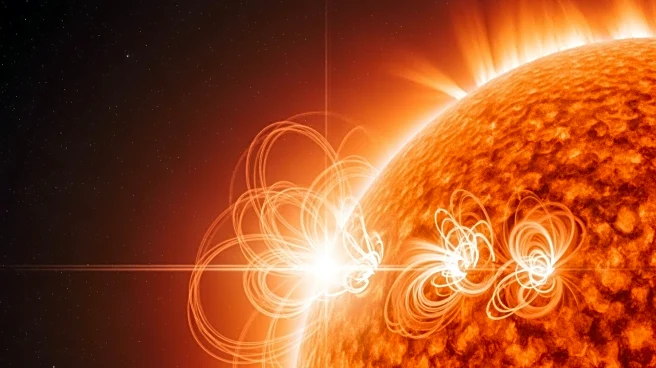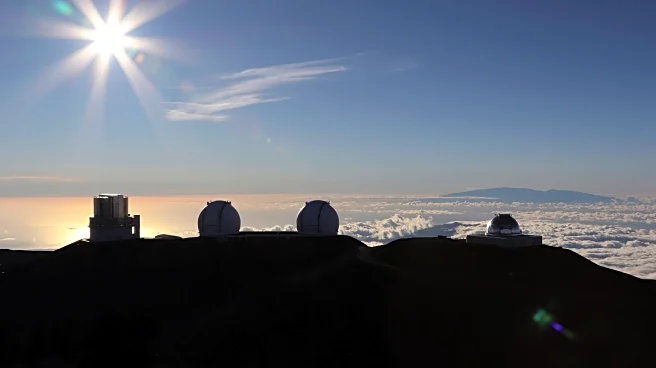What's Happening?
An international team of scientists has discovered small-scale torsional Alfvén waves in the Sun's corona, providing a significant clue to the long-standing mystery of why the corona is much hotter than
the Sun's surface. These waves, which twist through magnetic fields and transport plasma, were detected using the Daniel K. Inouye Solar Telescope in Hawaii. The discovery confirms the presence of these waves, which were previously hypothesized but not directly observed, and helps explain how energy is transferred from the Sun's surface to its outer atmosphere.
Why It's Important?
This discovery enhances our understanding of solar physics and the mechanisms that heat the Sun's corona. By identifying the role of Alfvén waves in transporting energy, scientists can improve models of solar activity and space weather forecasting. This has practical implications for predicting geomagnetic storms that can affect Earth's satellite networks and power systems. The findings also provide a foundation for testing other theories about solar dynamics and contribute to the broader field of astrophysics by offering insights into the behavior of magnetic fields in space.
What's Next?
Future research will focus on studying the mechanisms and distribution of these Alfvén waves across the corona in more detail. Scientists aim to refine models of solar activity and explore the implications of these findings for understanding solar winds and their impact on Earth. Continued observations and analysis will help validate theoretical models and improve predictions of space weather events, enhancing our ability to mitigate their effects on technological systems.














